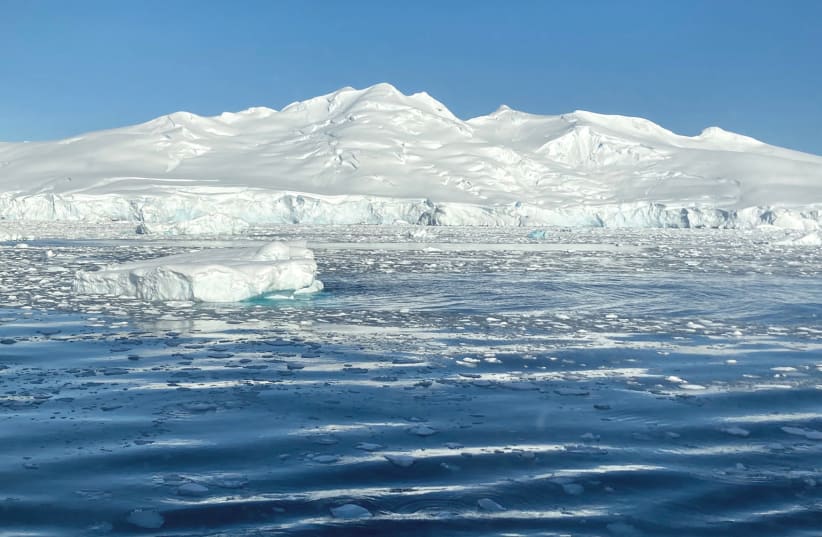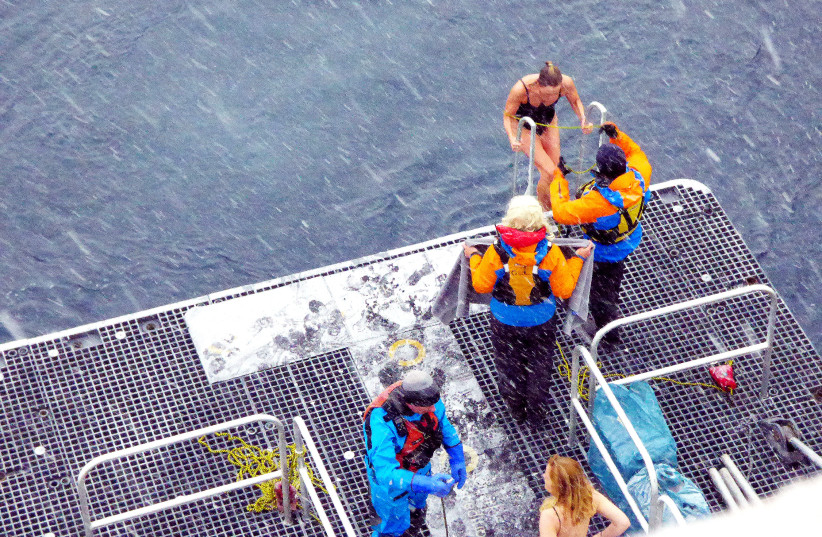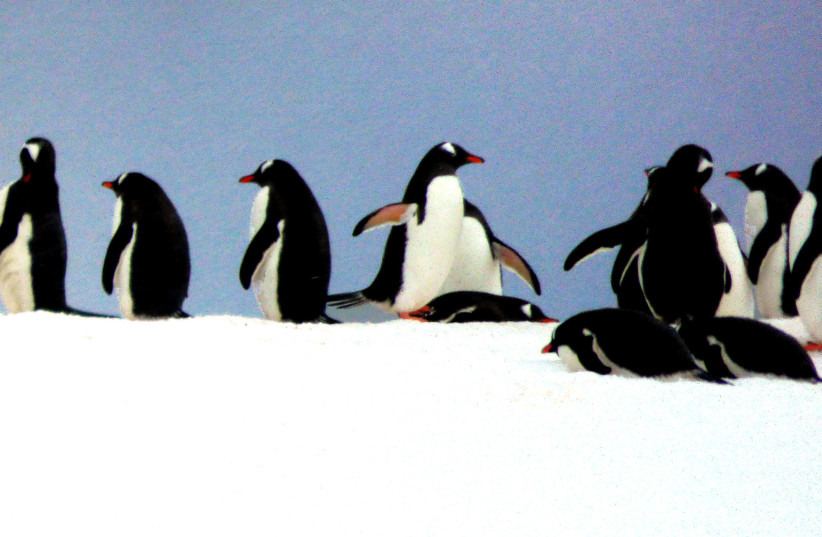Antarctica is the coldest place on Earth, a gift from the gods of water and ice... and wind! When I say wind, I don’t mean the regular kind that could send your hat flying. I mean the kind that threatens to catapult your whole body into an airborne missile.
Antarctica is unique! There are no people. There are no ancient monuments. There are no modern bustling cities; no lights, no pavements, no sign of human habitation; there aren’t even any Jews – probably the only landmass on Earth that did not at one time or another host a Jewish population.
Yet tourists from all over the world are flocking to see it before it sinks like fabled Atlantis under the waves and is lost forever. But this landmass is not a myth, it’s real! It’s the seventh continent – a raw, pristine, natural, protected and cherished environment.
Our Antarctic adventure began in Ushuaia, Argentina, where we boarded our cruise ship, Ultramarine, the newest in the Quark Expeditions line-up of luxury vessels that sail the Southern Ocean.
All cruise itineraries are dependent on weather, and luck was with us as we sailed south through the Beagle Channel – the natural waterway separating Argentina and Chile – named for Charles Darwin’s ship the HMS Beagle.
On our first day at sea, beautiful weather showered us with blue skies and seas calm enough for us to climb into zodiacs to visit Cape Horn, at the southernmost tip of Chile. Well, let me modify that statement since winds were raging between 65-80 kph at sea level and stronger gusts could be expected at the top of the exposed bit of rock where the waters of the Pacific and Atlantic oceans converge.
Upon reaching the rock, we were invited (sic) to climb the 152 wooden steps to the top where a pathway constructed of a bright yellow metal grid – kind of like the yellow brick road in the Wizard of Oz – necessary to protect the slow-growing vegetation in this harsh environment – greeted us.
One walkway led to the Albatross Monument and another to the lighthouse. The impressive Albatross Monument commemorates the thousands of lives that were lost attempting to navigate this historically perilous cape.
The lighthouse is monitored by the Chilean Navy, and every year a new family is chosen to live there. This year Sec.-Sgt. José Luarte, his wife and their three young children greeted us.
I couldn’t help but ask if they were concerned that the winds might carry off one of the children as I saw the youngest running while her feet weren’t touching the ground. They assured me the day was relatively mild, and that when it gets really windy – it has been clocked at 299 kph – the children play inside. This is an honor post, manned by patriots who consider it a great privilege to represent their country.
Drake Passage
Our next test was facing the notorious Drake Passage that leads to Antarctica. Sir Francis Drake (1540-1596) first discovered the waterway while circumnavigating the globe in a wooden ship a third the size of the Ultramarine. The Drake is known as one of the harshest in the world, and the courage and fortitude of those first intrepid sailors is akin to today’s astronauts getting into a tiny capsule and heading for Mars... except they wear protective gear, have sophisticated communications and scientific knowledge... while Drake and his sailors weren’t quite sure if they would fall off the Earth when they reached the horizon.
The Drake was unusually gentle with us but the next morning when we arrived at Yankee Harbor at the Nelson Straight near the South Shetlands hoping to visit penguin colonies, we encountered choppy seas making it too dangerous to attempt a landing.
However, it did not stop us from climbing down a ladder into a bobbing rubber craft with seas rising and dropping about two meters. Off we sped, bumping into waves that splashed and drenched us as we powered on toward Tower and Zigzag islands. Along the way we passed Gentoo penguins frolicking in the water – or perhaps showing off for us.
THE FOLLOWING day, getting in and out of the zodiacs was easier as the loading platform was lowered onto calmer seas and we were not required to climb down a ladder buffeted by the waves. While the sky and the sea were one monochromatic shade of gray, the wind had completely died down and the ride among the ice floats was magical, silent and serene, providing feathery falling snowflakes a gentle reception and allowing them to gather into clusters forming ice sheets on the face of the water.
We were fortunate to see this phenomenon, which happens only in the early spring when the sheets collide with icebergs calved off the glaciers – some sporting the vibrant turquoise of compacted ice from deep within the mother glacier. Shortly after, the ice floes would be lost to the warming waters.
When water starts to freeze on the ocean it is called “grease ice,” which is frozen frazil ice. Porridge ice turns into pancake ice, and when it gets colder it becomes nilas ice or glassy flat sheets. Who knew there were so many different names for ice?
But this was not the only bit of spicy information the expedition staff taught us about the nature and wildlife of Antarctica during their daily lectures. We learned of the mating practices of penguins, which have no external sex organs, so we can’t tell the sexes apart. We learned of the topography of the seventh continent and its political and scientific importance. We learned of intrepid explorers who sailed these seas and the hardships they endured.
It is an uncommon feeling to be on a tiny rubber craft floating in eerie solitude in the middle of an ocean when sky and sea are one; when there is no day and no night; and where one minute the sky is a brilliant blue and the next you can’t distinguish it from the forever ocean. One day we saw a rainbow. One day we took a helicopter ride over a glacier. One night a passenger spied a pod of minke whales moving past the ship in a sea so clear you could watch them maneuvering playfully underwater.
Every day delivered a magical adventure, such as the day half the passengers on the ship donned bathing suits, walked out on the freezing landing platform in a snow squall and took the “polar plunge.” A time-honored and hilarious spectacle of human beings flinging themselves into the icy abyss.
There was the day we walked on the face of the “Unknown Southern Land” for the first time, Antarctica, the seventh continent, and raised its flag in our frozen hands.
For information visit: https://www.quarkexpeditions.com/


